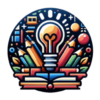In recent years, remote learning has emerged as a transformative force in the field of education. The advent of technology and the internet has made it possible for students to access education from virtually anywhere in the world. This shift in the educational landscape has brought about significant changes in both opportunities and challenges. In this article, we will explore how remote learning is changing education and its impact on students, teachers, and the education system as a whole.
The Rise of Online Learning Platforms
One of the most prominent changes brought about by remote learning is the proliferation of online learning platforms. These platforms offer a wide range of courses and resources, covering everything from traditional academic subjects to specialized skills and hobbies. Students can choose from a vast catalog of courses, often at their own pace and convenience. This flexibility has democratized education, making it accessible to learners of all ages and backgrounds.
Online learning platforms like Coursera, edX, and Khan Academy have become household names, providing high-quality content from top universities and institutions. The accessibility of these platforms has enabled people to acquire new skills, enhance their existing knowledge, and pursue lifelong learning with unprecedented ease.
Customized Learning Experiences
Remote learning also allows for more personalized and customized learning experiences. With the help of data analytics and artificial intelligence, online platforms can tailor content to individual student’s needs and preferences. This adaptive learning approach ensures that students receive the support and resources they require to succeed, regardless of their starting point.
Furthermore, students can learn at their own pace, revisiting difficult concepts or speeding through familiar ones. This flexibility promotes a deeper understanding of the material and fosters a sense of self-directed learning.
The Importance of Digital Literacy
In today’s rapidly evolving digital landscape, digital literacy has emerged as a critical skill for individuals of all ages. Digital literacy encompasses the ability to use technology effectively and responsibly, enabling people to navigate the digital world with confidence and competence.
Digital literacy is essential for several reasons. First and foremost, it empowers individuals to access a vast array of information and resources available on the internet. From online research to e-learning platforms, digital literacy enables people to harness the power of the web for education, professional development, and personal enrichment.
Furthermore, digital literacy plays a pivotal role in the workforce. Many jobs now require a level of digital proficiency, and this trend is only expected to increase. Individuals who are digitally literate are better equipped to adapt to changing workplace demands, effectively use digital tools, and stay competitive in the job market.
Moreover, digital literacy promotes critical thinking and digital citizenship. It helps individuals evaluate the credibility of online information, spot misinformation and fake news, and engage responsibly in online communities and social media.
In today’s interconnected world, digital literacy is not just a valuable skill but a fundamental necessity for full participation in society. As technology continues to shape our lives, fostering digital literacy has become a shared responsibility of educational institutions, families, and communities to ensure that individuals can navigate the digital landscape safely and effectively.
Global Collaboration and Cultural Exchange
Remote learning has broken down geographical barriers, facilitating global collaboration and cultural exchange among students. Through virtual classrooms and online forums, students from different corners of the world can interact, share ideas, and work on projects together. This cross-cultural exposure enhances their understanding of diverse perspectives and prepares them for a globalized workforce.
Additionally, many educational institutions now offer remote study abroad programs, allowing students to immerse themselves in foreign cultures without leaving their homes. This broadens their horizons and reduces the financial and logistical barriers associated with traditional study-abroad opportunities.
Challenges and Digital Divide
While remote learning offers numerous advantages, it is not without its challenges. One of the most pressing issues is the digital divide, which refers to the gap in access to technology and the internet. Not all students have equal access to the necessary devices and high-speed internet connections, putting them at a disadvantage in remote learning environments.
To address this issue, governments, schools, and organizations have been working to bridge the digital divide by providing devices and internet access to underserved communities. However, this remains an ongoing challenge that requires concerted efforts to ensure equitable access to education.
Redefining the Role of Educators
Remote learning has also redefined the role of educators. Teachers are no longer limited to delivering lectures in a physical classroom. Instead, they must adapt to various online tools and platforms, develop new pedagogical approaches, and provide ongoing support to students in virtual environments.
Furthermore, teachers are increasingly seen as facilitators of learning rather than sole sources of knowledge. They guide students, encourage critical thinking, and create interactive and engaging online experiences. This shift in teaching methods requires continuous professional development and a willingness to embrace technology as an integral part of the educational process.
Flexible Learning Models
The traditional academic calendar and rigid schedules have been challenged by remote learning. Students have the flexibility to choose when and where they learn, allowing them to balance their education with other responsibilities such as work or family commitments.
This flexibility has been particularly beneficial for adult learners, who can now pursue further education without disrupting their existing routines. It has also paved the way for the development of micro-credentials and short courses that can be completed in a matter of weeks, providing learners with tangible skills and knowledge for immediate application.
Assessment and Credentialing
Remote learning has prompted a reevaluation of assessment methods and credentialing. Traditional exams and standardized tests have limitations in online environments, and educators have been exploring alternative assessment methods such as project-based assessments, peer reviews, and competency-based evaluations.
Furthermore, remote learning has led to the rise of digital badges and certificates, which can be shared electronically and verified online. These credentials provide a more flexible and granular way of showcasing one’s skills and knowledge, making it easier for individuals to demonstrate their qualifications to employers and educational institutions.
Evaluating the Effectiveness of Remote Learning
The widespread adoption of remote learning has prompted a pressing need to assess its effectiveness as an educational model. Educators, policymakers, and researchers have turned their attention to measuring the impact of remote learning on students’ academic achievement and overall learning experiences.
One key aspect of evaluating remote learning effectiveness is examining academic outcomes. Researchers analyze student performance on assessments, standardized tests, and assignments to determine whether remote learning can produce results comparable to traditional classroom instruction. This assessment involves considering factors such as attendance, completion rates, and grades.
Furthermore, qualitative research methods, including surveys, interviews, and focus groups, help capture the subjective experiences of students and educators. These insights shed light on the challenges and advantages of remote learning and the emotional and social aspects of the remote educational environment.
Another critical aspect of evaluating remote learning is the comparison between synchronous and asynchronous approaches. The research seeks to identify which mode of remote learning suits different subjects, grade levels, and student needs, as synchronous learning involves real-time interactions, while asynchronous learning allows for more flexibility.
Additionally, ongoing assessment and feedback mechanisms play a pivotal role in gauging remote learning effectiveness. Monitoring student engagement, participation, and retention rates helps institutions adapt their teaching methods and provide necessary support to ensure better learning outcomes.
In conclusion, evaluating the effectiveness of remote learning is a complex process that involves a combination of quantitative and qualitative methods. As remote learning continues to evolve, it is imperative to continually assess its strengths and weaknesses, allowing educators and policymakers to make informed decisions and refine remote learning models to maximize educational benefits for all students.
Summary
In conclusion, remote learning is fundamentally changing education in promising and challenging ways. It has expanded access to education, customized learning experiences, promoted global collaboration, and redefined the role of educators. However, it also brings to the forefront issues like the digital divide that need to be addressed to ensure equitable access.
As technology continues to advance and remote learning becomes more ingrained in the educational landscape, it is crucial for stakeholders to adapt, invest in infrastructure, and explore innovative solutions to make remote learning a viable and inclusive option for all. With careful planning and commitment to addressing its challenges, remote learning has the potential to revolutionize education and open up new horizons for learners worldwide.

